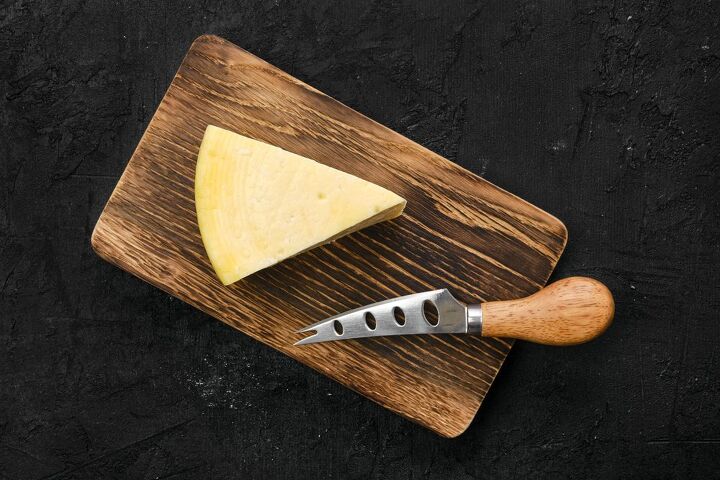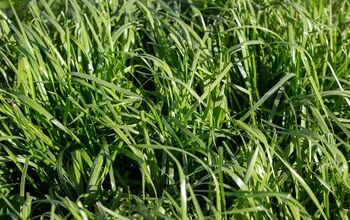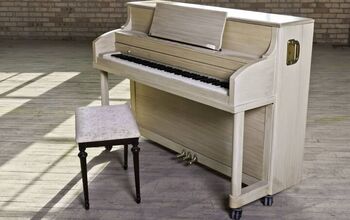9 Types Of Cheese Knives (With Photos)

Cheese knives can be confusing because they are not universal and each one seemingly suits a specific cheese. Whether you prefer soft cheese like brie or hard cheese like cheddar, you likely need a cheese knife to make them easier to serve. With that said, what are the types of cheese knives and what kind of cheese are they ideal for?
Cheese spreaders, plane knives, chisel knives, and open work blades are the main types of cheese knives. Specialty cheese knives include gorgonzola knives, hard cheese knives, parmesan knives, and cheddar knives, and they are ideal for hard cheeses. Cheese spreaders, gorgonzola knives, and cheese wire are perfect for cutting and serving soft cheese.
You can use hard cheese knives for soft cheese, but that can make them harder to clean. Follow along as we explore the world of cheese knives.
Cheese Knife Types
The 9 main types of cheese knives run the gamut from soft to hard cheeses. Some knives are for specific types of cheese, such as gorgonzola or cheddar, and others like offset cheese knives have multiple uses. Let’s take a look a the different types of cheese knives and see what cheese they are best suited for.
1. Cheese Spreader
Cheese spreaders are perfect for spreading soft cheeses on bread and crackers. They have no sharp edges, and cheese spreaders cannot cut into blocks of cheese. You can serve cream cheese, goat cheese, soft gorgonzola, and robiola cheese with a cheese spreader.
It is common to find cheese spreaders on snack trays and charcuterie boards. A cheese spreader is not useful for cutting into cheese, and you’ll need something else for hard cheeses like cheddar and Colby. Cheese spreaders are a fixture in countless kitchens.
2. Plane Knife
Plane knives are sharp on both sides at the tip and are ideal for hard cheeses such as Colby, cheddar, and pepper jack. They are completely flat, so you can use the side to tamp down semi-soft cheeses, or to make it easier to cut. Plane knives make it easy to serve cheese, and you can use the tip similar to a fork.
It is common to use plane knives to cut provolone and swiss, but they work with most types of cheese. Plane knives make it much easier to cut large amounts of cheese for a party or when you entertain guests. They are often much larger than standard cheese cuts and are suitable for cutting into blocks of cheese like asiago.
3. Chisel Knife
Chisel knives are similar to plane knives, but they are generally much larger. You typically only need a chisel knife if you regularly cut into thick blocks of cheese. They are flat so you can turn it on its size to break the cheese into a crumble consistency to make it easier to serve.
Many chisel knives are made entirely out of stainless steel. Chisel knives are less useful than cheese spreaders and plane knives because they usually offer more cutting surfaces than most homeowners need. However, you should always keep a chisel knife in your kitchen arsenal if you often have guests over and prepare cheese boards.
4. Cheddar Knife
Cheddar knives look more like a traditional cleaver than a cheese knife. However, there is nothing better to cut through cheeses such as cheddar and Colby than a cheddar knife. It is easy to handle cheddar knives, and they are just as easy to keep clean.
Cheddar knives are overkill if you don’t regularly cut large chunks or blocks of cheese. You can find small cheddar knives that are more useful for casual cheese enthusiasts. Similar to chisel knives, the average homeowner may not need a cheddar knife, but it never hurts to have one around if you love hard cheeses.
5. Gorgonzola Knife
Gorgonzola knives are ideal for gorgonzola, but they work well with any soft and crumbly cheese. They aren’t ideal for cutting into thick cheeses, but you can easily spread blue cheese and gorgonzola with a gorgonzola knife. Gorgonzola knives are notable for their rounded shape.
One side of a gorgonzola knife is sharp, but not sharp enough to easily cut a block of cheddar. Homeowners often leave a gorgonzola knife out with a spread of creamy cheeses. It is easy to clean gorgonzola knives and they are almost always dishwasher safe.
6. Open Work Blade
Also known as soft cheese knives, open work blades are the most distinct-looking cheese knives. They are easy to recognize because open work blades have holes in them. Open work blades are ideal for soft cheeses that can create a mess if you use a regular cheese spreader or plane knife.
It is common to use open work blades for brie and fresh mozzarella. Soft cheeses can be messy, and the holes in an open work blade help mitigate that problem. Some open work blade soft cheese knives have a forked tip that makes it easier to serve cheese.
7. Parmesan Knife
As the name suggests, parmesan knives are a must-have utensil for fans of parmesan cheese. The pointed tip that parmesan knives have make it easy to serve parmesan or put it away at the end of the night. One edge of a parmesan knife is sharp enough to easily slice through chunks of parmesan.
Most parmesan knives are moderately sized and have an easy-to-spot bell shape. However, you can find smaller or slimmer parmesan knives with a serrated edge. Parmesan knives work well with just about any hard cheese besides parmesan, such as gruyere, and they are generally durable.
8. Offset Cheese Knife
Offset cheese knives are common in professional and household kitchens alike. The offset shape makes them ideal for cutting blocks of cheese from an angle. Offset cheese knives are perfect for hard cheeses, but they work well with soft cheeses.
You’ll need to clean your offset cheese knife several times in a night if you use it to cut soft cheeses. It is essential to keep an offset cheese knife around if you are even a casual cheese lover. They aren’t as useful in daily life as a cheese spreader but offset cheese knives can save the night when you have to cut into large chunks and blocks.
9. Hard Cheese Knife
Hard cheese knives are long knives used to cut hard cheese. Their size makes it easy to cut through an entire cheese wheel with a hard cheese knife if necessary. In many ways, hard cheese knives are the most simple type besides cheese spreaders.
You can find hard cheese knives with plastic or stainless steel handles. Make sure to exercise caution when you use hard cheese knives because of their large size.
Which Cheese Knife Do I Use?
The type of cheese knife that you need to use depends on the type of cheese you have. You can make it easier if you split the types of cheeses and knives into two categories: soft and hard.
Soft
The most common type of soft cheese knife is the open work blade, also known as a soft cheese knife. However, cheese spreaders are arguably the most common type of soft cheese knife. Soft cheeses like gorgonzola and brie can benefit from a gorgonzola knife.
You can use chisel knives for soft and semi-hard cheeses alike, and that makes them one of the most versatile types of cheese knives. Other tools, such as cheese wire are also perfect for soft cheese if you’d rather not use a knife.
Hard
Cheddar knives, parmesan knives, and hard cheese knives are the best option for hard cheeses. You simply cannot cut through hard cheeses like cheddar and asiago with a cheese spreader or soft cheese knife. Hard cheese knives are generally sharper and have longer blades than soft cheese knives.
Chisel knives are perfect for semi-hard cheeses that a soft cheese knife would not work well with.
Related Questions
Why does a cheese knife have holes?
Soft cheese knives have holes to prevent sticking and minimize a mess when you cut cheese. The holes make it easier to serve individual slices of soft cheese without having to touch the sharp end of the knife. Holes also reduce friction and allow the blade to glide through the cheese for an easier cut.
Does cutting cheese dull blades?
Cutting cheese can dull blades over time but it is more common to warp them with extensive cutting. Hard cheese such as asiago and cheddar is more likely to dull a blade than a soft cheese like brie. You can purchase cheese knife sharpeners to prolong its life or simply replace your cheese knife when it goes dull.
Are cheese graters dishwasher safe?
Small cheese graters are dishwasher safe, but large units aren’t ideal for the dishwasher. It is possible to wash a cheese grater by hand, but it is difficult to get into each crevice. Soft cheeses often stick to the holes on a cheese grater, and you won’t damage it if you put it in the dishwasher.
Related Articles

Nick Durante is a professional writer with a primary focus on home improvement. When he is not writing about home improvement or taking on projects around the house, he likes to read and create art. He is always looking towards the newest trends in home improvement.
More by Nick Durante




































